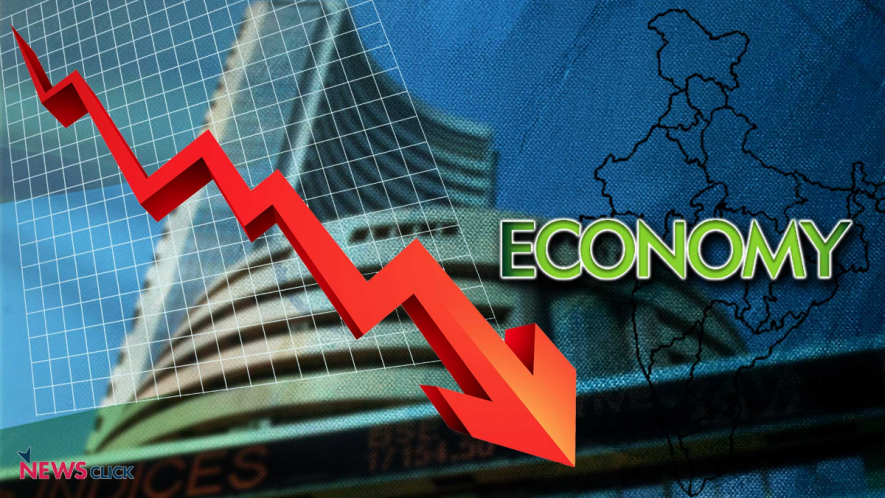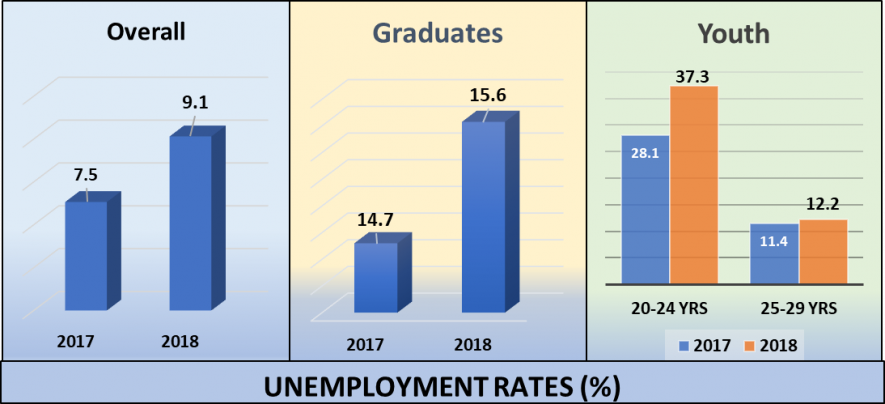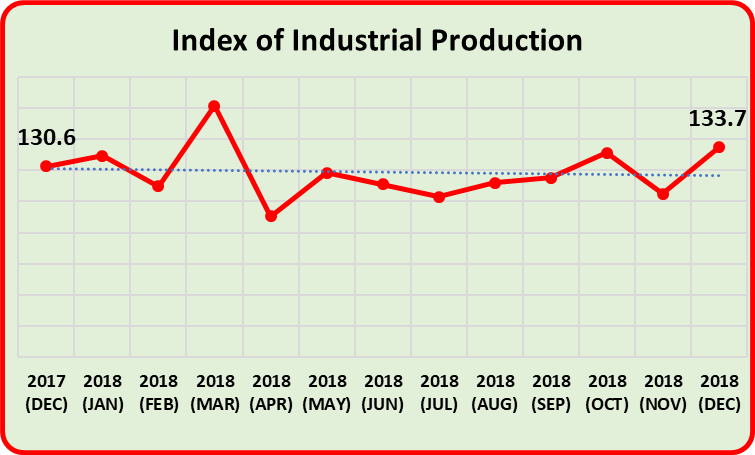Slowing Economy, Rising Joblessness

India's GDP growth in the third quarter of the current financial year slowed down to lowest in the last six consecutive quarters.
Advance estimates of Gross Domestic Product (GDP) for the current year 2018-19, and estimates for the third quarter (Sept-Dec 2018) show unmistakeable signs of a slowing economy, despite the flawed method of calculating these estimates. The country’s economy will grow by 7% in the current year which will end this March. Last year it grew by 7.2%.
More importantly, growth in the third quarter slowed down to 6.6% compared to 7% in the preceding quarter and 7.7% in the corresponding third quarter of 2017-18. Third quarter growth is the lowest in six consecutive quarters. Analysts expect that this slowdown will last till mid-year at least.
Looking deeper than these headline numbers, a much more serious picture emerges. Agriculture Gross Value Added (GVA) grew at a stunningly low rate of 2.7% in the third quarter, compared to 4.2% in the preceding quarter and 5.2% in the first quarter of 2018-19. This is not some seasonal dip: in the third quarter of 2017-18, GVA growth was 4.6%, almost double that of the current rate. This poor growth in agriculture is being caused by low prices of produce and low wages – both issues being the ones that farmers have been agitating about. But the Modi government thinks it can bumble its way through by doling out Rs. 2,000 to every small and marginal farmer.
Manufacturing growth has halved from the first quarter to hit a low of 6.7%. GVA calculations of manufacturing are in any case flawed (as NewsClick has repeatedly pointed out earlier) because they are calculated on the basis of listed companies’ performances combined with an extrapolation from IIP data for the unorganised sector. But despite these fatal flaws, the growth trend is worrying.
Also Read: GDP ‘Grows’, Jobs and Incomes Fall
But these growth figures, though alarming for mainstream analysts, do not show the real damage that the Modi government’s policies have caused to India. For instance, have a look at the unemployment numbers in the same quarter, as estimated by CMIE:

Growth of unemployment rates (%) among youth and graduates in India. Ref: CMIE
Overall unemployment rate is up from 7.5% in 2017 (third quarter) to a staggering 9.1% in 2018 (third quarter). In the same period, graduate unemployment has gone up from 14.7% to 15.6%. Confirming the unfortunate state of the much-hyped demographic dividend, joblessness among youth of 20-24 years age has zoomed up from 28% to over 37%. In other words, more than a third of these young people are unable to find jobs. Even among the youth in the age group of 25-29 years old, joblessness is up from 11.4% to 12.2% in the past one year.
Also Read: Economic Growth Slows, But BJP Govt Clings to Fiscal Conservatism
Various other measures confirm that there is an all-round simmering crisis that the Modi government has no clue how to deal with.
The Index of Industrial Production (IIP) which gives a measure of how industrial production is changing has been virtually stagnant for the past one year. [See chart below]

Index of Industrial Production (IIP) has become stagnant for the past one year.
The recently released sectoral bank credit data by RBI also confirms that the industry is facing rough weather. Between March 2018 and January 2019, industrial credit increased by an abysmal 1.9%. For the small-scale sector, it actually declined by half a percentage point and for the medium scale units, it marginally increased by a third of a percentage point.
The CSO data release on GDP estimates also reveals an important malaise that is completely one of Modi government’s own creation. Public expenditure growth is showing a steep declining trend at constant prices. In 2017-18, Government Final Consumption Expenditure increased by 15% in 2017-18 but then slowed down and ended up with an estimated growth of just 8.9% in 2018-19. Neoliberal tightfistedness is constraining public spending in times when it could have created more demand and spurred economic activity – and employment.
Read More: Budget 2019: Modi is Leaving Behind A Monster Debt
Get the latest reports & analysis with people's perspective on Protests, movements & deep analytical videos, discussions of the current affairs in your Telegram app. Subscribe to NewsClick's Telegram channel & get Real-Time updates on stories, as they get published on our website.























